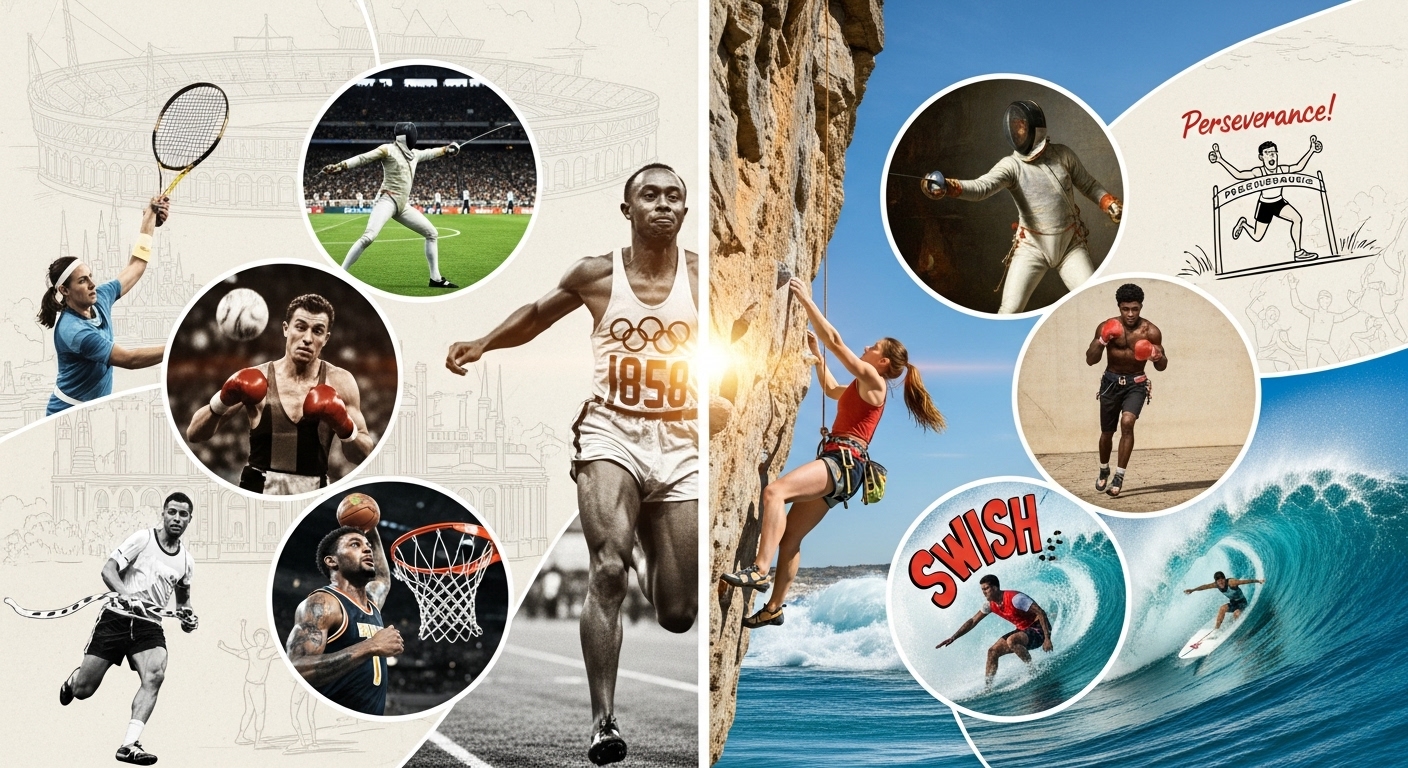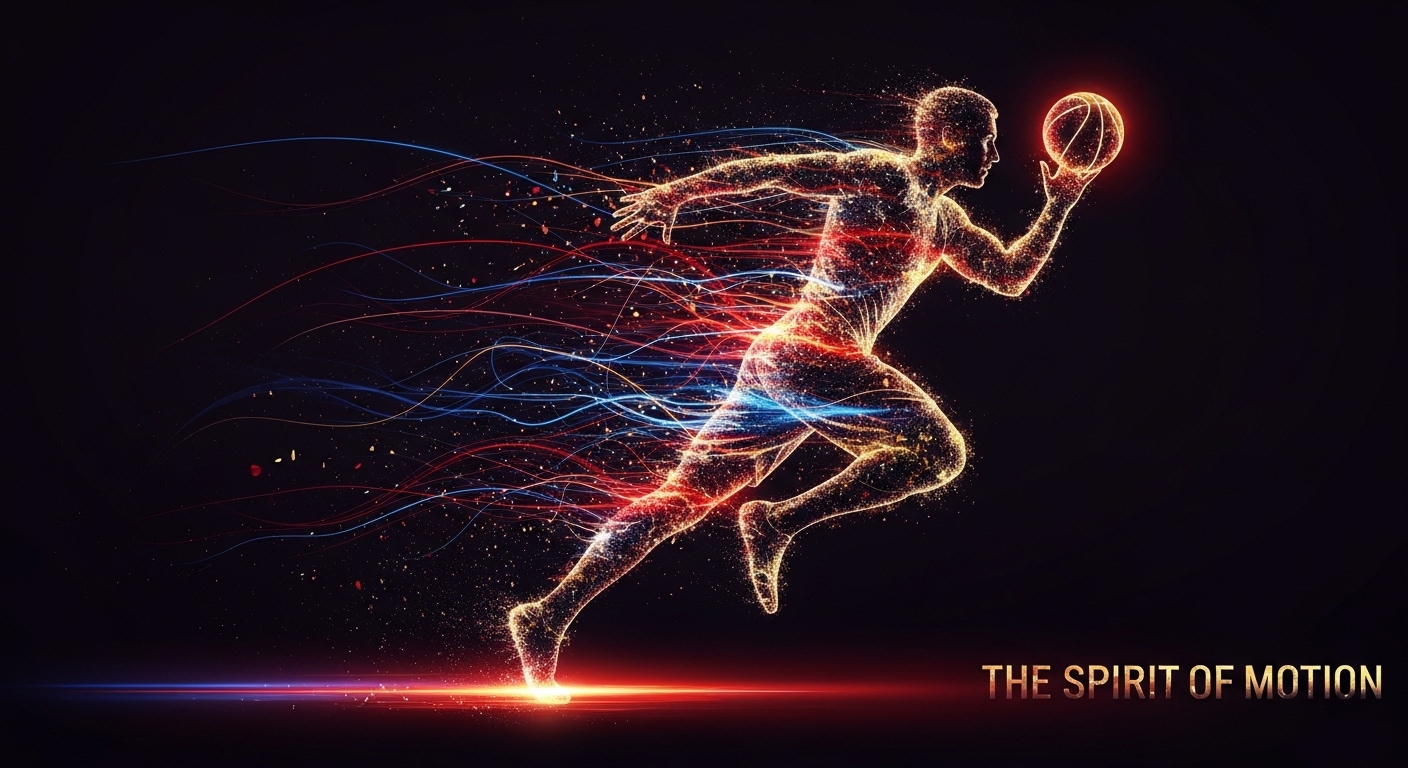Introduction
Sports are far more than physical activities or games played for entertainment. They represent a universal language that transcends borders, cultures, and generations. From ancient Olympic arenas to modern digital stadiums filled with cheering fans, sports have always been a reflection of human perseverance, ambition, teamwork, and glory. They inspire billions, unite nations, and teach lessons that go beyond victories and defeats. The story of sports is, in many ways, the story of human civilization itself—a tale of struggle, achievement, and endless passion.
The Historical Roots of Sports
The history of sports stretches back to the dawn of humanity. Archaeological evidence suggests that humans engaged in physical contests as early as 3000 BCE. The ancient Egyptians wrestled, boxed, and raced in honor of their gods. The Greeks formalized sports through the Olympic Games, first held in 776 BCE, where athletes competed in disciplines like running, javelin, and discus throwing to earn glory for their city-states.
In ancient Rome, sports took a more brutal turn with gladiatorial contests, where combatants fought for survival and spectacle in front of tens of thousands. While these events were often violent, they shaped the way the public viewed competition and entertainment. The Middle Ages brought about knightly tournaments, archery contests, and hunting, all of which reinforced the values of courage, honor, and discipline.
With the rise of modern societies during the 19th century, sports evolved into organized activities with formal rules and associations. England became the birthplace of many sports we know today—football, cricket, rugby, and tennis all emerged during this time. This era marked the transition of sports from mere pastimes to global institutions.
The Modernization of Sports
The industrial revolution and technological advancements transformed sports into global spectacles. Railways, radios, and later television helped sports reach the masses. The founding of the International Olympic Committee in 1894 revived the Olympic spirit on a global scale, and the first modern Olympics held in Athens in 1896 became a turning point for international athleticism.
In the 20th century, professional leagues began to dominate. The National Football League (NFL), Major League Baseball (MLB), National Basketball Association (NBA), and other organizations built massive audiences and billion-dollar industries. The commercialization of sports changed how athletes trained, competed, and interacted with fans. Sponsorships, broadcasting rights, and branding turned sports into a full-fledged business.
However, modernization also brought challenges—doping scandals, corruption, and the over-commercialization of athletes. Despite these issues, the core essence of sports remained intact: fair play, competition, and the thrill of victory.
The Psychology of Sports
Sports have a deep psychological impact, both on participants and spectators. For athletes, sports are not only about physical ability but also about mental strength. The ability to focus, handle pressure, and maintain discipline often separates champions from contenders. Sports psychologists study how motivation, confidence, and resilience shape performance.
Fans, on the other hand, experience emotional highs and lows with every game. Supporting a team or athlete becomes an identity, a source of belonging and pride. This collective emotion can unite entire cities or nations. The joy of victory or heartbreak of loss can create memories that last a lifetime.
At a deeper level, sports symbolize hope. When underdogs rise against the odds, when a team makes a miraculous comeback, or when an athlete breaks a world record, it reminds us of what humans can achieve with determination and hard work.
The Globalization of Sports
Today, sports have truly become global. Football, or soccer as it is known in some countries, is perhaps the most popular sport worldwide. The FIFA World Cup draws billions of viewers and becomes a festival of cultures every four years. The Olympic Games also bring together athletes from nearly every nation, fostering unity and peace through competition.
Basketball, cricket, tennis, and athletics have similarly expanded their global reach. The NBA has fans from Africa to Asia. Cricket dominates in India, Pakistan, Australia, and the Caribbean. Tennis icons like Serena Williams, Rafael Nadal, and Novak Djokovic have become global ambassadors of excellence.
Globalization has also created cross-cultural exchanges. Players from one continent often play in leagues of another, blending styles, techniques, and traditions. This internationalism enriches sports and turns them into a bridge connecting people across diverse backgrounds.
The Role of Technology in Modern Sports
Technology has revolutionized every aspect of sports. Advanced training tools, wearable fitness trackers, and data analytics have improved athlete performance. Video analysis helps coaches design better strategies, while instant replay systems and goal-line technology ensure fairer officiating.
In addition, virtual reality and artificial intelligence have changed how fans experience sports. Spectators can now relive moments from different camera angles or engage in fantasy sports leagues that mimic real tournaments. The rise of esports—competitive video gaming—has added a new dimension, showing that competition isn’t limited to the physical world.
Yet, technology also raises ethical questions. How much should artificial enhancement or data-driven coaching influence performance? The line between fair competition and technological advantage continues to spark debate.
The Economics of Sports
Sports have become one of the most lucrative industries in the world. From ticket sales and broadcasting rights to merchandise and sponsorships, the financial ecosystem around sports is vast. Mega-events like the Olympics and the FIFA World Cup generate billions of dollars in revenue but also come with high costs of infrastructure and management.
Athletes have turned into brands. Endorsements, social media presence, and personal ventures make many of them global celebrities. This fusion of fame and athleticism has both positive and negative implications. While it inspires many, it also puts immense pressure on athletes to maintain both performance and image.
The economic impact of sports extends beyond stadiums. Local economies benefit through tourism, job creation, and global exposure. Cities like Barcelona, Tokyo, and Los Angeles have leveraged sports to boost their international reputation.
Sports and Society
Sports play a crucial role in shaping societies. They teach discipline, teamwork, leadership, and respect. School and community sports help children develop social skills and confidence. Moreover, sports have been powerful vehicles for social change.
Throughout history, athletes have used their platforms to speak out against injustice. Jackie Robinson broke baseball’s color barrier in 1947, paving the way for racial integration in American sports. Muhammad Ali stood against discrimination and war. In recent years, movements like “Black Lives Matter” and “Equal Pay for Women” have found strong voices in sports communities.
Sports also bring people together during crises. After natural disasters or national tragedies, matches and tournaments often serve as symbols of unity and healing. They remind people that despite divisions, shared passion can restore hope.
The Beauty of Team Sports
Team sports highlight cooperation and collective strength. Football, basketball, volleyball, hockey, and rugby rely on synchronization and communication. Every player contributes to the overall success of the team, whether through scoring, defending, or supporting.
Team sports mirror society in many ways. Just as communities thrive on collaboration, teams succeed when individuals work toward a common goal. A great team isn’t just a collection of stars but a cohesive unit built on trust, effort, and shared vision.
The Power of Individual Sports
Individual sports like tennis, athletics, swimming, and gymnastics emphasize personal excellence and discipline. The athlete’s journey is often solitary, defined by hours of training, mental focus, and sacrifice. Watching a sprinter cross the finish line, a gymnast perform a flawless routine, or a swimmer break a world record reveals the raw beauty of human potential.
These sports also highlight inner strength. When there’s no teammate to rely on, success or failure rests entirely on one’s own performance. This responsibility often pushes individuals to their limits, both physically and mentally.
The Role of Women in Sports
Women’s participation in sports has grown immensely in the past century. From being excluded in early Olympic Games to now leading global tournaments, women athletes have shattered stereotypes and inspired millions. Figures like Serena Williams, Megan Rapinoe, Simone Biles, and Naomi Osaka have not only achieved greatness but also advocated for equality, mental health awareness, and social justice.
Despite progress, challenges remain. Pay disparities, limited media coverage, and unequal resources persist in many sports. However, the growing visibility of women’s leagues and increasing support from fans and sponsors suggest a bright future for women’s sports.
Youth and the Future of Sports
The next generation of athletes represents the future of sports. Grassroots programs and youth academies around the world are nurturing talent from an early age. These young athletes bring fresh energy, creativity, and diversity to every sport they touch.
Moreover, digital platforms allow aspiring players to share their journeys and connect with fans globally. The accessibility of training videos, online coaching, and virtual communities means that talent can emerge from anywhere, not just traditional powerhouses.
Encouraging youth participation is vital not just for finding future champions but for promoting physical health, teamwork, and confidence. Sports teach lessons that classrooms sometimes cannot—resilience in defeat, humility in victory, and respect for effort.
The Spirit of the Olympics
No discussion of sports would be complete without the Olympic Games. They remain the ultimate celebration of human potential and unity. Every four years, athletes from around the world gather under one flag of sportsmanship, setting aside political and cultural differences.
The Olympics represent ideals of peace, equality, and global friendship. They remind the world that competition can exist without conflict. Each medal, each record, and each performance tells a story of dedication and dreams fulfilled.
The Dark Side of Sports
While sports inspire, they are not without flaws. Issues like doping, match-fixing, corruption, and exploitation have at times tarnished the integrity of competitions. The pressure to win at any cost can lead to unethical behavior and mental health struggles among athletes.
Addressing these problems requires strong governance, transparency, and a commitment to fairness. The world of sports must protect its athletes, especially young ones, from exploitation and overtraining. True sportsmanship lies not in winning but in playing with integrity.
The Unbreakable Connection Between Fans and Sports
Fans are the heartbeat of sports. Their chants, cheers, and unwavering support create the magic that fills stadiums and screens. The emotional bond between fans and teams runs deep—passed from one generation to the next. Sports provide people with hope, joy, and a sense of belonging.
In moments of victory, fans celebrate together. In moments of defeat, they stand united in disappointment. This shared emotional experience builds community spirit and strengthens social bonds across the globe.
The Everlasting Legacy of Sports
Sports are eternal because they reflect everything that makes us human—the desire to improve, to challenge limits, to find meaning in struggle. Whether it is the roar of the crowd, the determination in an athlete’s eyes, or the unity of nations during a world championship, sports continue to shape our collective story.
They remind us that greatness lies not only in records or trophies but in effort, perseverance, and respect for the game. The spirit of sports endures through every generation, carrying with it lessons that apply to life itself.
Conclusion
Sports are a celebration of humanity’s finest qualities—strength, courage, teamwork, and respect. They connect people across languages and borders, inspiring dreams and fostering unity. From ancient arenas to modern stadiums, from grassroots fields to global championships, the spirit of sports remains timeless.
As the world evolves, sports continue to adapt, but their essence never changes. They are not merely games; they are reflections of who we are and who we aspire to be. Through victories and defeats, through cheers and tears, sports will forever stand as a testament to the unbreakable spirit of humankind.



